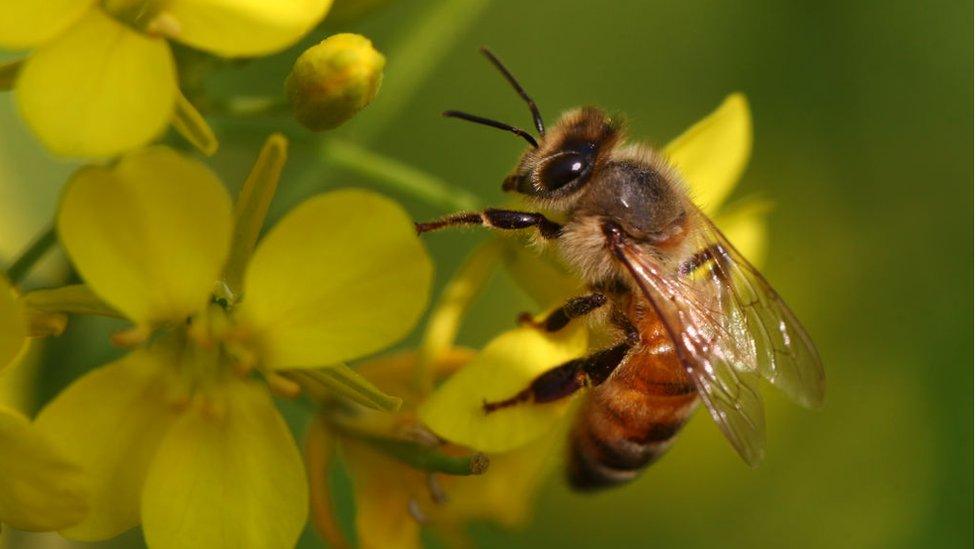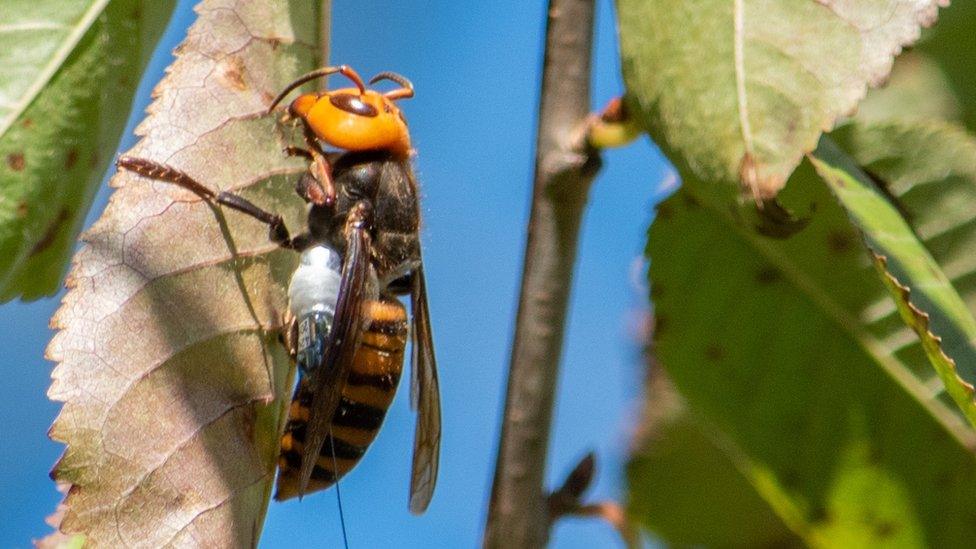Asian honeybees 'defend hives from hornets with faeces'
- Published

Bee populations have been on the decline across the world
Researchers have found that honeybees in Vietnam collect and smear animal faeces around their nests to prevent deadly raids by giant hornets.
They say the finding is the first to document the use of "tools" by honeybees.
The bees used chicken poo, buffalo dung and even human urine to defend their hives.
Honeybees play a critical role in pollinating the plants humans depend on for their diet.
The scientists behind the study, published in the journal PLOSE ONE on Wednesday, external, said the research was sparked when a Vietnamese beekeeper told them that the mysterious dark spots they had spotted at hive entrances was excrement.
"We thought that'd be crazy because bees don't collect dung," lead author Heather Mattila told AFP news agency.
But the study confirmed that the poo was indeed a defence being deployed by the bees, specifically against giant hornets.
It adds to "an already impressive list of defences they have to prevent these hornets from destroying their colonies", Dr Mattila, a biology professor at Wellesley College in the US state of Massachusetts, said.
Bees are known for using a range of strategies to deflect attacks from predators.
They have been observed physically shielding their colonies through synchronised body shakes, hissing, or enveloping encroachers in a ball until they overheat.
Listen to the sounds of honeybee queens "tooting" and "quacking"
Giant Asian hornets - up to five times bigger than honey bees - can slaughter a bee colony in a matter of hours. They can also inflict powerful stings on humans.
The scientists found that the hornets were less likely to launch mass attacks on hives dotted with more faeces, and that they spent 94% less time chewing at the entrance if they did land.
The use of excrement was particular to Asian honeybees, they added, saying their counterparts in Europe and North America lacked similar defences.
Asian hornets have recently been detected in North America where they have been dubbed "murder hornets" for the threat they pose to local honeybees and ecosystems as well as concerns about human safety.
Around 40 people are killed annually by the hornets in Asia, according to the Smithsonian Museum in Washington DC.
- Published16 June 2020

- Published26 March 2019

- Published11 November 2020
